Review: Nia Cooking Class at Seminyak Bali
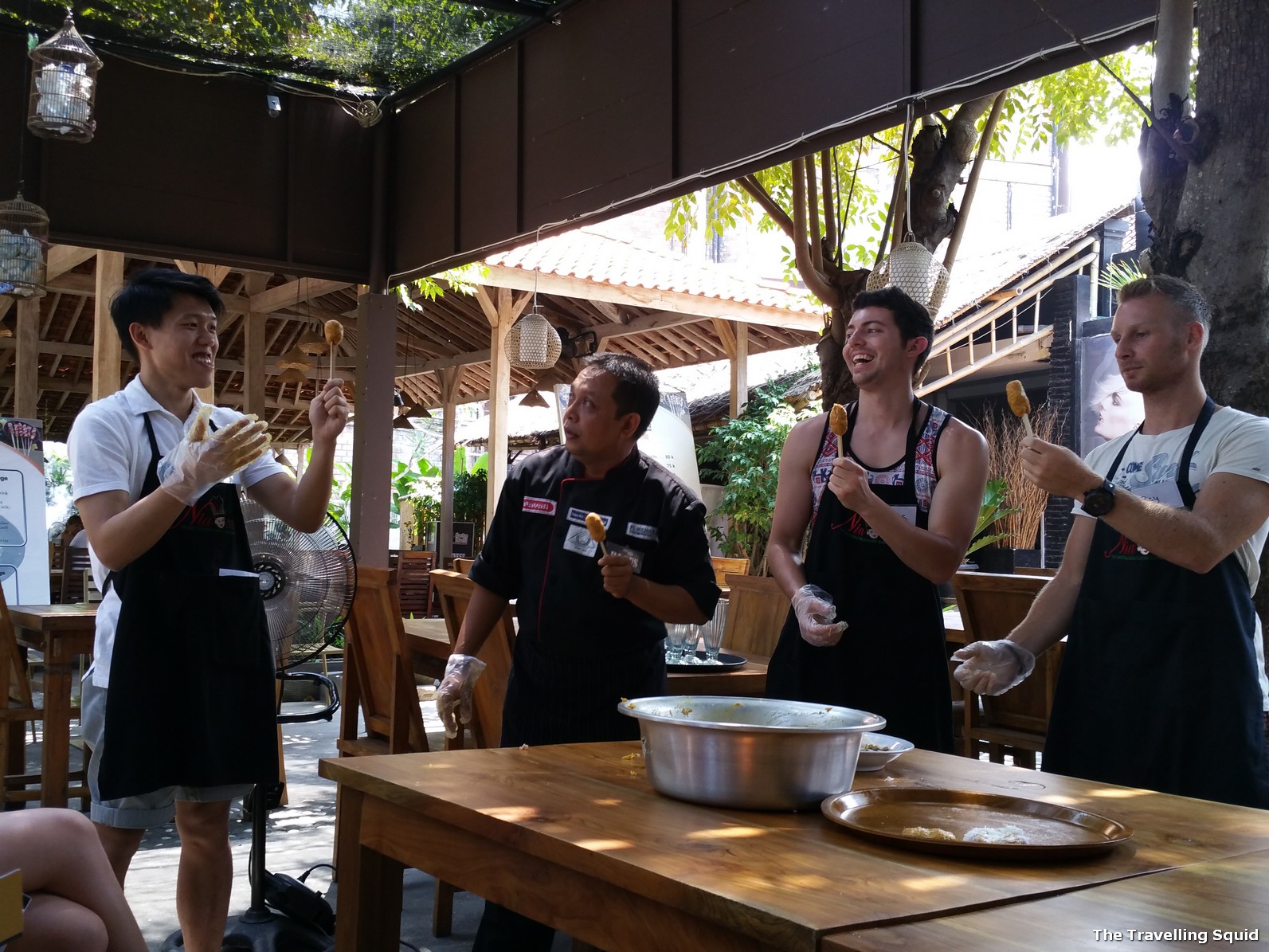
Perhaps my expectations were too high, but when Friend S mooted the idea of attending a cooking course one morning in Bali, as it was too hot to visit the beach again, I thought we were able to gain some cooking tips for making local Balinese dishes. We did some research online and found the Nia Cooking Class at Seminyak Bali.
I was looking to learn how to cook local Balinese food – the famous Balinese duck for instance, but most of our experience was focused on frying and grilling simple food items which we knew how to make in Singapore. Some of the food dishes taught were things like nasi goreng, and satay, which is what we are familiar with in Asia.
There was about 10 of us in a group – we were the only Asians. The other participants were from Switzerland, Holland and Australia. I suppose, this cooking course could be quite an eye-opener for them.
So here is how the programme went:
1) Visit to the local wet market
A vehicle came to pick us up at 8am, and brought us to a meeting place. We waited for about half an hour before proceeding to the market. At the market, the guide shared with us various stalls found in the market, and names of the spices on sale, which we were familiar with.
I didn’t really enjoy the visit to the wet market. It was rather crowded and not the cleanest of all places. The produce there didn’t look as fresh too – there was a papaya which was on display, and it was partly rotten. The meat stalls smelt strongly of meat which wasn’t fresh.
I suppose if you’re looking to understand the Balinese way of life, it’s a good experience. I am familiar with Asian wet markets, having visited several on my trips to South East Asia, and it wasn’t really an eye-opener.
I’d have to admit that I have changed. Five years ago, understanding local culture was a big thing. I would take spontaneous visits to local places, in an attempt to observe what goes on in the lives of others. But Phebe today is just too tired, too weary to seek out and learn about the lives of others. With a tired mind and soul, all she wants is to be in a cool, comfortable environment, perhaps in a supermarket looking at fresh cuts of beef, or fresh herbs in an air-conditioned environment.
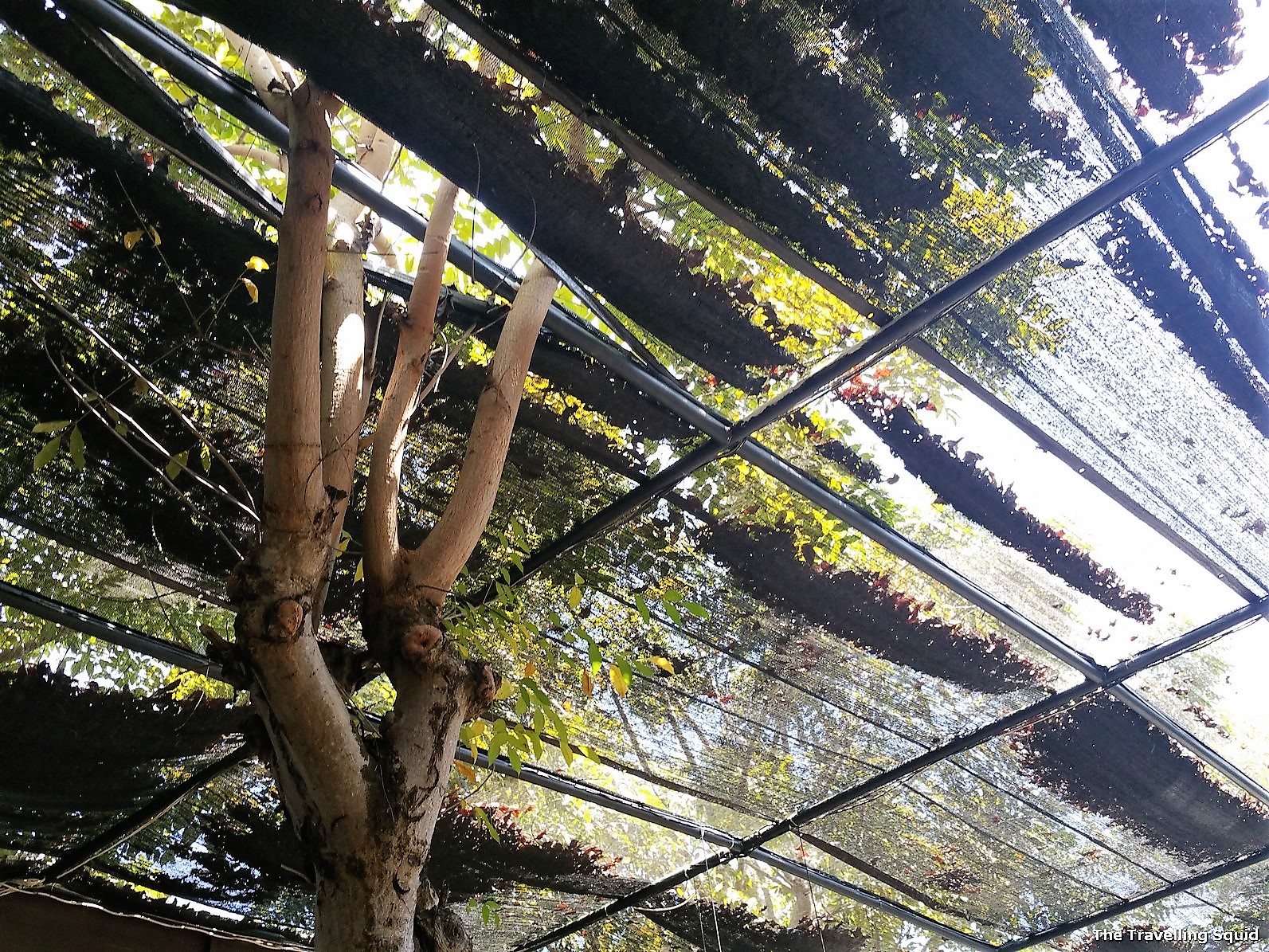
2) Cooking
After the wet market visit (and Friend S and I heaved a sign of relief) we headed to a restaurant in downtown Seminyak. It was a 20 min walk away from our accommodation, Dash Hotel. We sat down for a welcome drink and some food, while the chef, Chef Bagus, gave us an overview of his background, the restaurant, and made some jokes – I suppose in a bid to make the session more interactive and lighten it up a little.
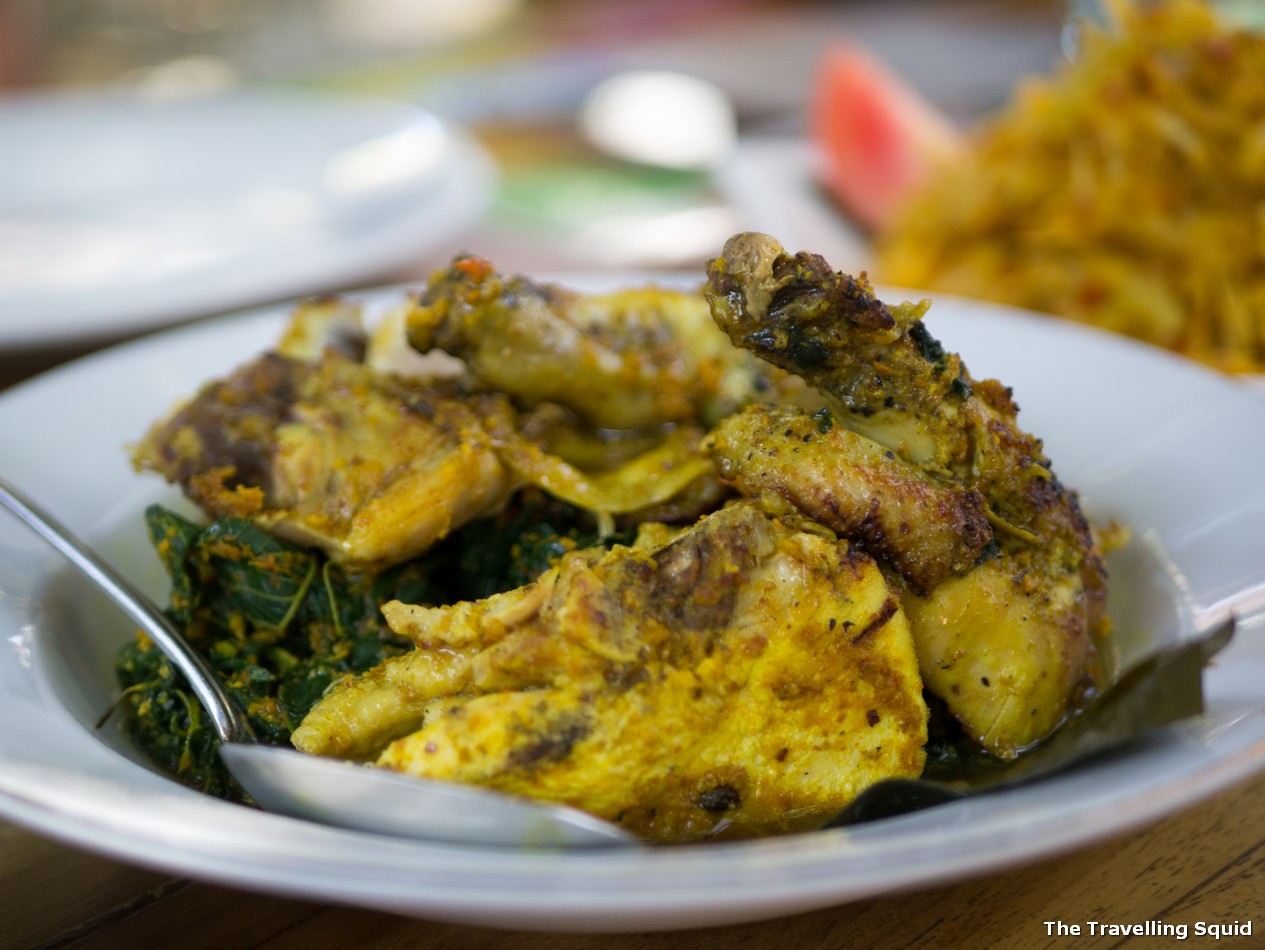
We were given a booklet with the recipes for 10 over dishes. It was pretty detailed and I supposed, would really come in super useful.
We made chicken (there’s a bit of renpah making using a stone pestle and mortar) which could be done in 5 mins with a food processor machine. There was also a part on wrapping a chicken up with banana leaf (which I didn’t do so well with), skewering the meat, and wrapping it up in banana leaf.
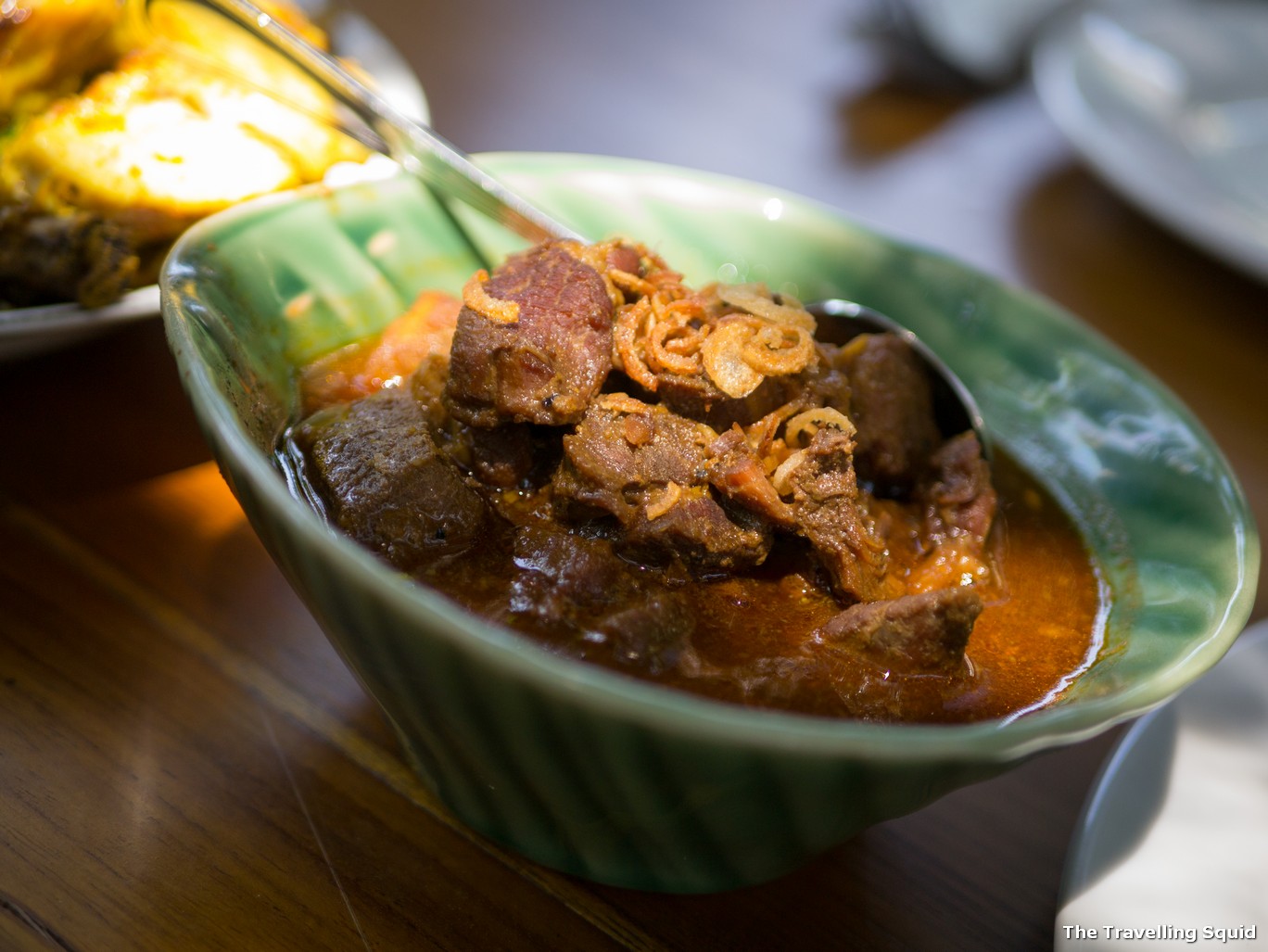
It isn’t really a cooking class for individuals per se, as you would need individual cookers for that. It was more of a demonstration. There are some hands-on preparation involved, but it I thought it could have been more in-depth. Most of the time spent was on massaging the paste on to something, or wrapping meat up in a banana leaf. There was only one cooker, so frying up food up was not possible for everyone.
Alas, the 12 dishes were finally done and we could settle down to have a meal.
3) Eating
There was more than enough food to go around, so no worries if you have a big appetite. The food was nice to eat, though I must say that they revolve around the same flavours of coconut milk, curry paste and the same South-east Asia spices which were used in marinades. There was also a dessert mixed with thick coconut milk, which was a little too sweet and heavy for my liking.
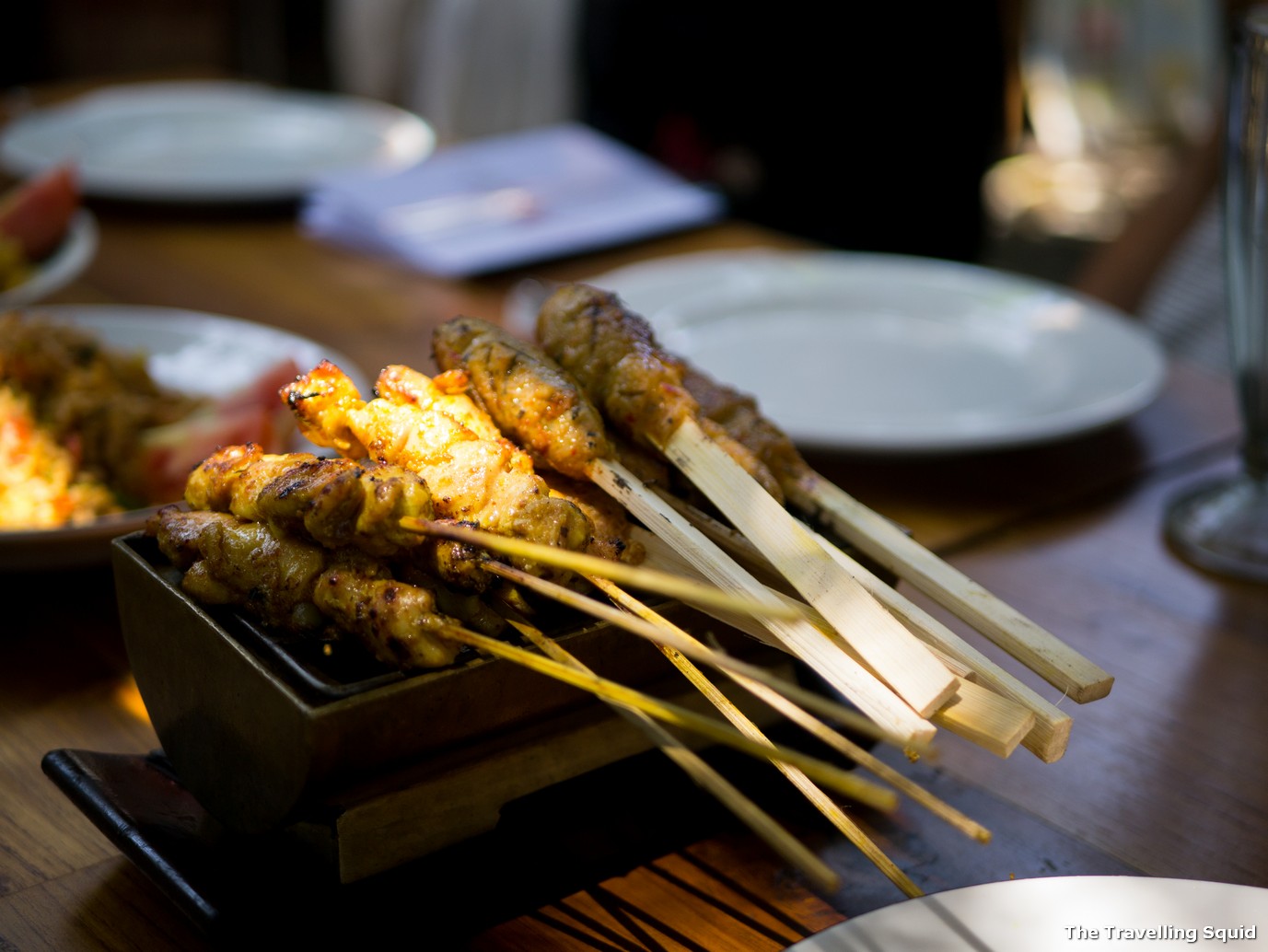
The Travelling Squid’s Take
I found the cooking class pretty decent, and instructional, though I would have appreciated if we had more time to go through each dish, and try the actual cooking ourselves. In addition, I didn’t find the visit to the market very illuminating too, and would rather have just the session focused on cooking.
Should you be keen to find out more on cooking classes in South-east Asia and Japan, check out travel-cooking website Cookly!
Hope you find this review useful, and feel free to drop a comment in the box below.

Leave a Reply